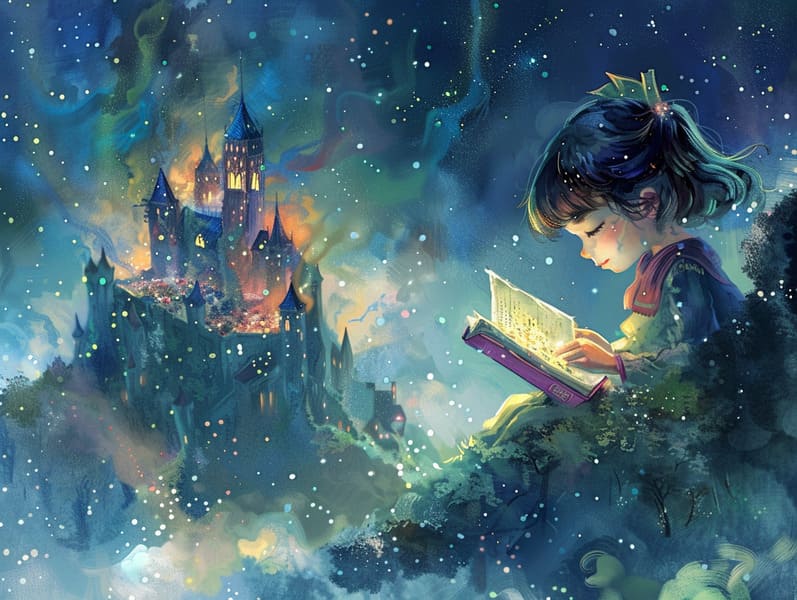Uncovering the Past of Old Fairy Tales and Its Ageless Appeal.
Uncovering the Past of Old Fairy Tales and Its Ageless Appeal.
Blog Article

Vintage fairy tales have timeless appeal. These stories have been told from one generation to the next well before they were ever documented. They were born from a variety of backgrounds, including American traditions. They were initially narrated among mature audiences, often carrying themes and messages related to the societal norms and beliefs of the time.
The famous Grimm duo, Jacob and Wilhelm Grimm, were among the first to collect many of these beloved narratives. Their anthology, "Grimm's Folk Tales," included tales like "The Story of Cinderella," "The Story of Hansel and Gretel," and "Schneewittchen," which have since become essentials in the world of classic fairy tales. Similarly, H. C. Andersen's enchanting tales, such as "The Mermaid's Tale," and "The Duckling's Story," have floated into hearts worldwide, guaranteeing their place in the pantheon of iconic fairy tales.
Despite their age, classic fairy tales remain as pertinent as ever, especially as bedtime stories for kids. These enchanting tales are now available in different formats, including colorful picture books, captivating animations, and digital fairy tales.
Their lasting appeal can be connected to several magical reasons:
Crucial Morals: Classic fairy tales often convey important moral lessons. Fairy tales like "The Boy Who Cried Wolf" teach the value of truth, while "The Race of the Tortoise and the Hare" show the values of perseverance and meekness. These tales offer young ones clear distinctions between correct and incorrect, developing their moral compass in a subtle yet profound way.
Compassion and Insight: Old fairy tales frequently present beings facing challenges and problems, inspiring listeners to sympathize with their struggles and support their triumphs. For instance, "The Tale of Beauty and the Beast" conveys the value of seeing beyond looks to understand the true character of a person, advancing empathy and understanding.
Cultural Appreciation: Many traditional fairy tales are rooted in the cultural contexts from which they came. Learning from these fairy tales can provide intriguing perspectives into different heritages, encouraging a sense of global insight and appreciation.
Creativity and Fantasy: The mythical elements in old fairy tales—enchanted lands—trigger children’s inventiveness. These fairy tales bring readers to otherworldly realms, kindling inventive ideas and a sense of enchantment that lasts a lifetime.
Timeless fairy tales are not only charming but also pedagogical. They function as bewitching tools in fostering various cognitive and emotional skills in little ones. When traditional fairy tales are voiced, they develop speaking abilities by teaching new terms and meanings and complex sentence structures. This practice also enhances hearing perception and mental focus, as children concentrate deeply, prepared to see what happens next.
Furthermore, examining the themes and characters of classic fairy tales can enhance thinking skills and reasoning skills. Young ones are shown to notice patterns, predict happenings, and understand cause and effect. These reflections also advance little ones convey their thoughts and feelings, contributing to their emotional intelligence.
In today’s high-tech era, the accessibility of digital fairy tales has made these tales more attainable than ever. Web platforms and applications supply huge assortments of Grimm's fairy tales that can be explored or heard anytime, anywhere. Fairy tales voiced are particularly common, giving an entertaining method for young ones to relish these enchanting tales. Voice books and spoken videos bring characters and settings to life, often enhanced by delightful harmonies and songs that amplify the storytelling experience.
The enduring charm of traditional fairy tales lies in their ability to evolve to modern society while holding onto their fundamental ideas. Contemporary reinterpretations of these narratives often incorporate more multicultural characters and modern settings, making them relatable to today’s audience. However, the central morals of braveness, sympathy, and justice remain unchanged, continuing to reach audiences of all ages.
Classic fairy tales also offer a sense of comfort and predictability. They offer a systematic narrative with a straightforward beginning, middle, and end, often finishing with the resolution of conflicts and the triumph of virtue over vice. This constancy can be heartening for the young, yielding a sense of consistency in an constantly changing world.
Traditional fairy tales continue to fascinate and train new generations, maintaining their grandeur and relevance in modern society. As nighttime stories for kids, they confer a perfect blend of magic and knowledge, facilitating moral values, empathy, and creativity. The existence of online fairy tales and the widespread nature of fairy tales recited ratify that these old tales remain reachable to new generations.
By maintaining and communicating these tales, we continue to laud the rich tapestry of lore and cultural heritage. Whether you are seeing a vibrantly illustrated book, exploring a online library, or listening to an here audiobook, the grace of timeless fairy tales is always within reach. These stories convey of the everlasting effect of storytelling and its ability to draw us together across eras and regions.
Regardless if you are browsing a colorful picture book, perusing a digital library, or listening via an voice book, the appeal of timeless fairy tales is always within reach.
These stories reveal of the timeless nature of tales and its ability to gather us across eras and regions, establishing a link that fascinates and enlightens alike.